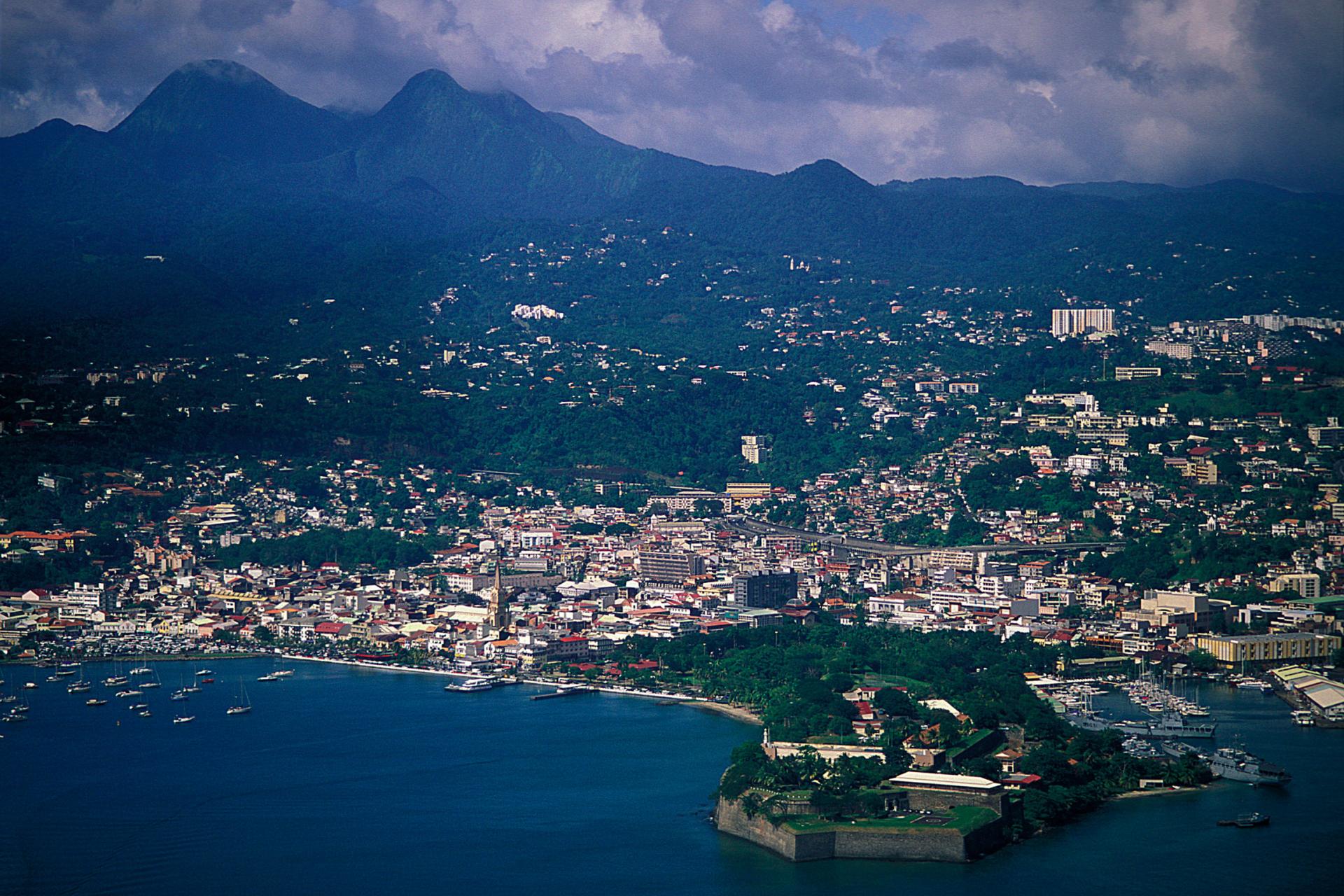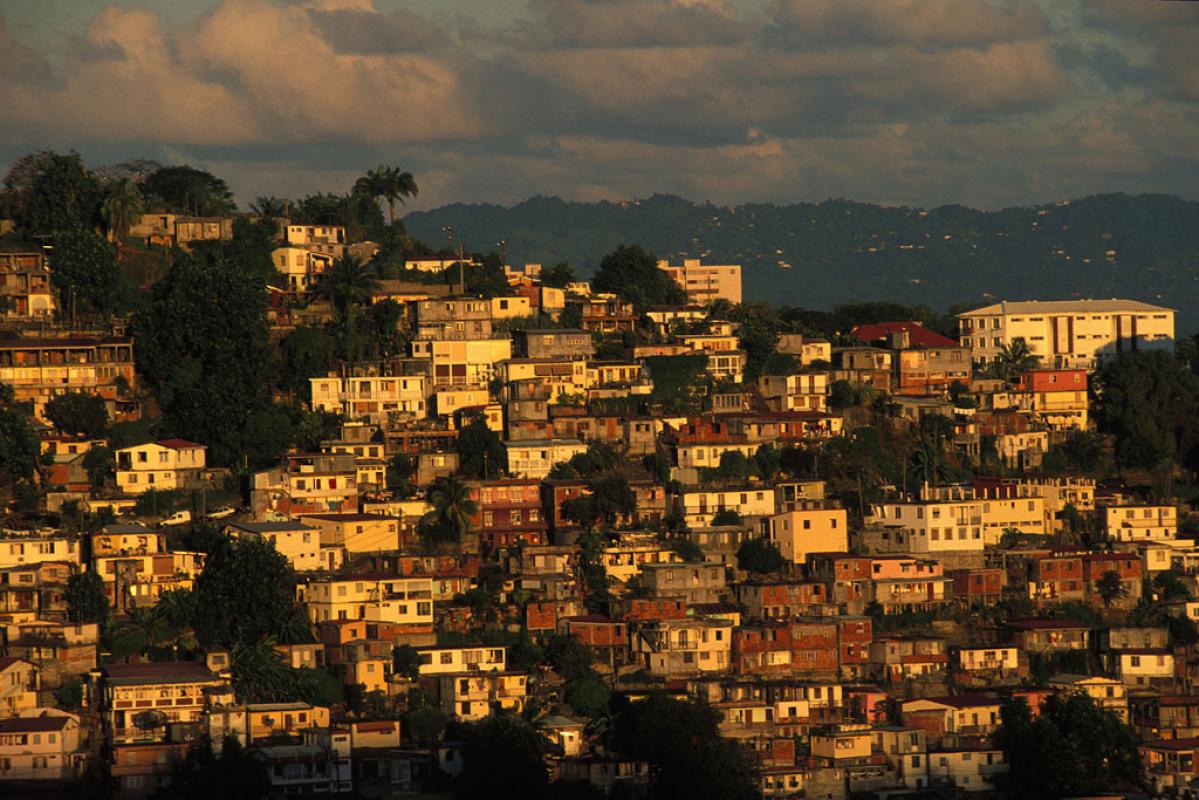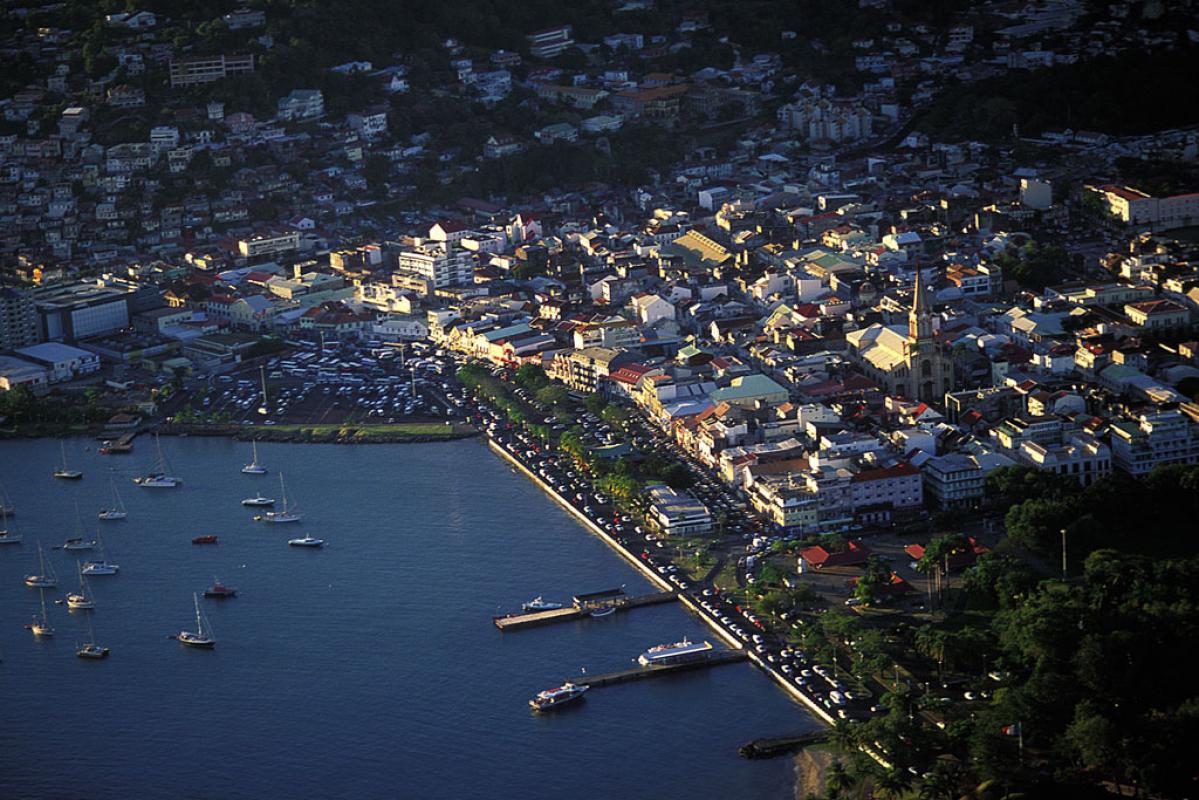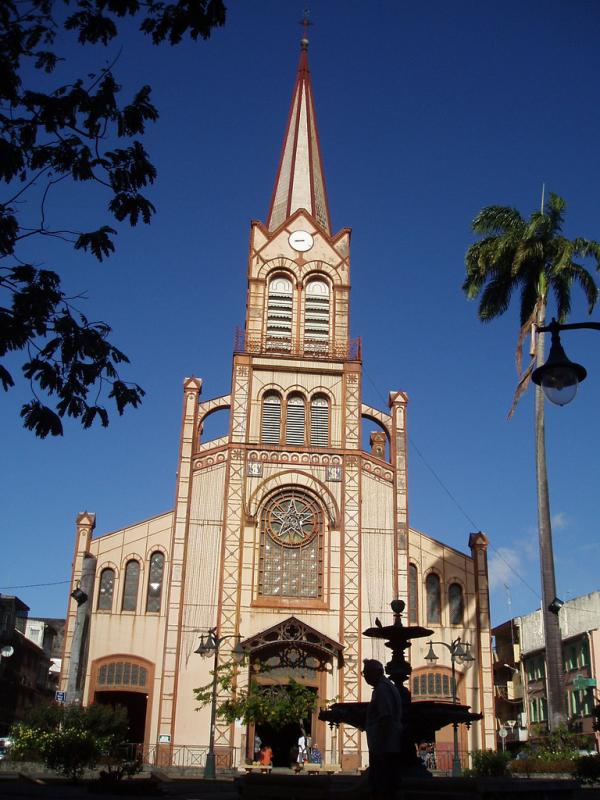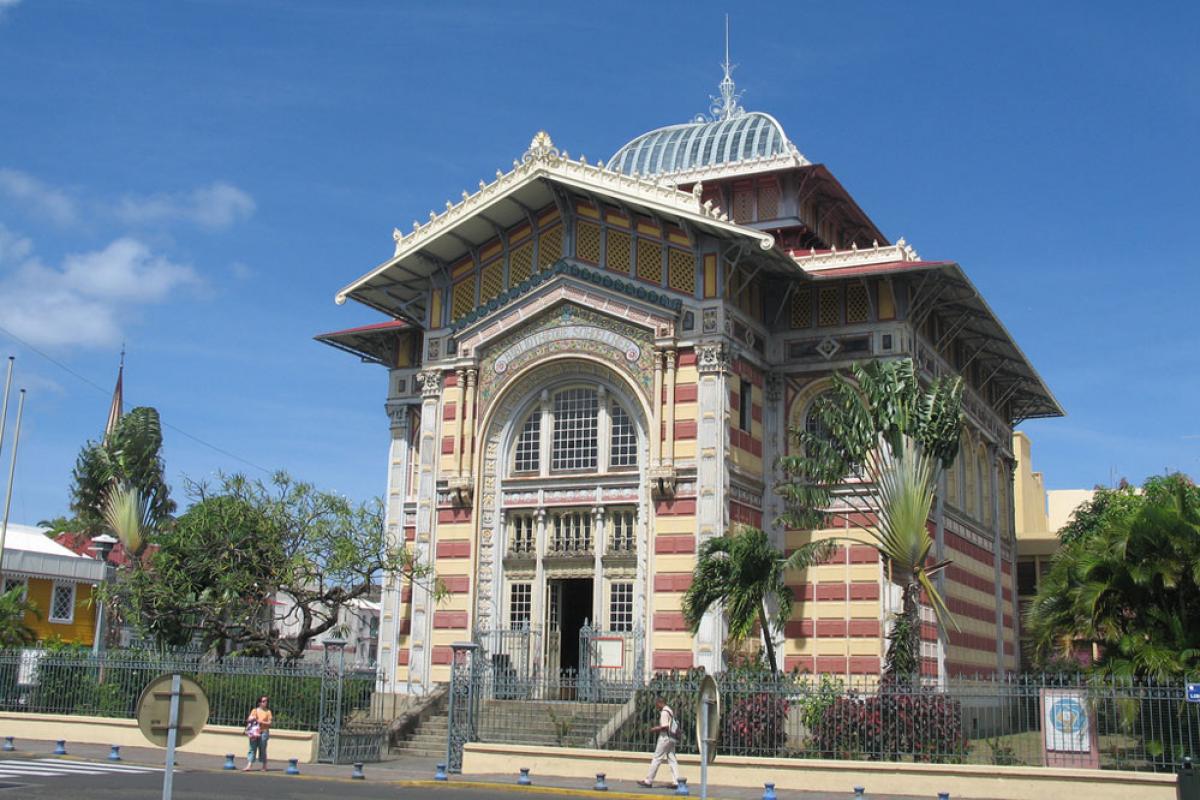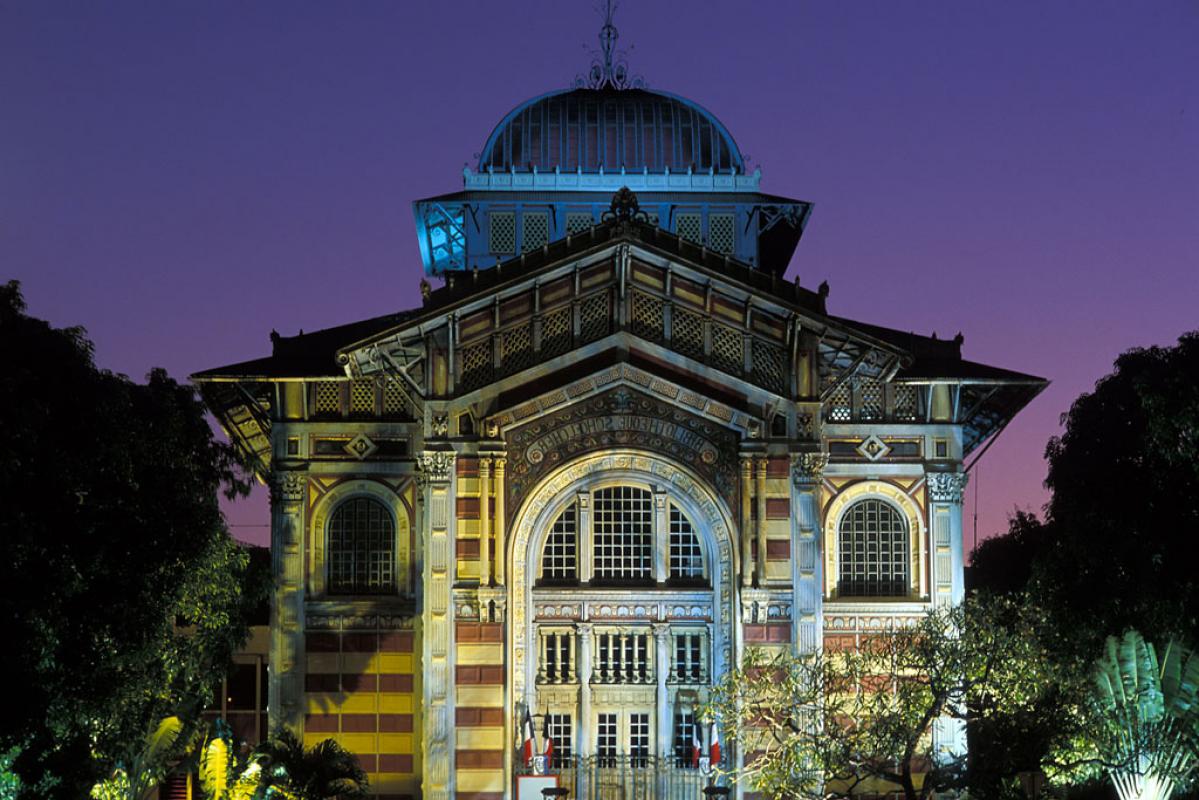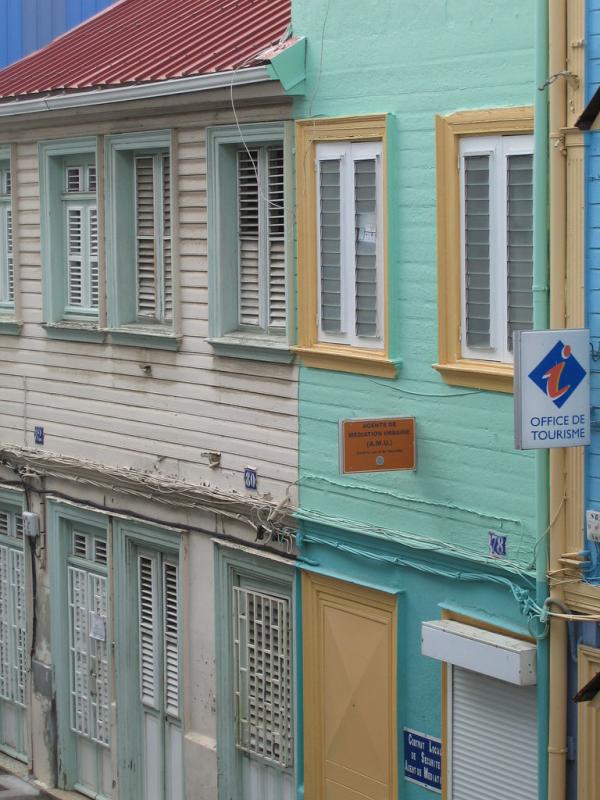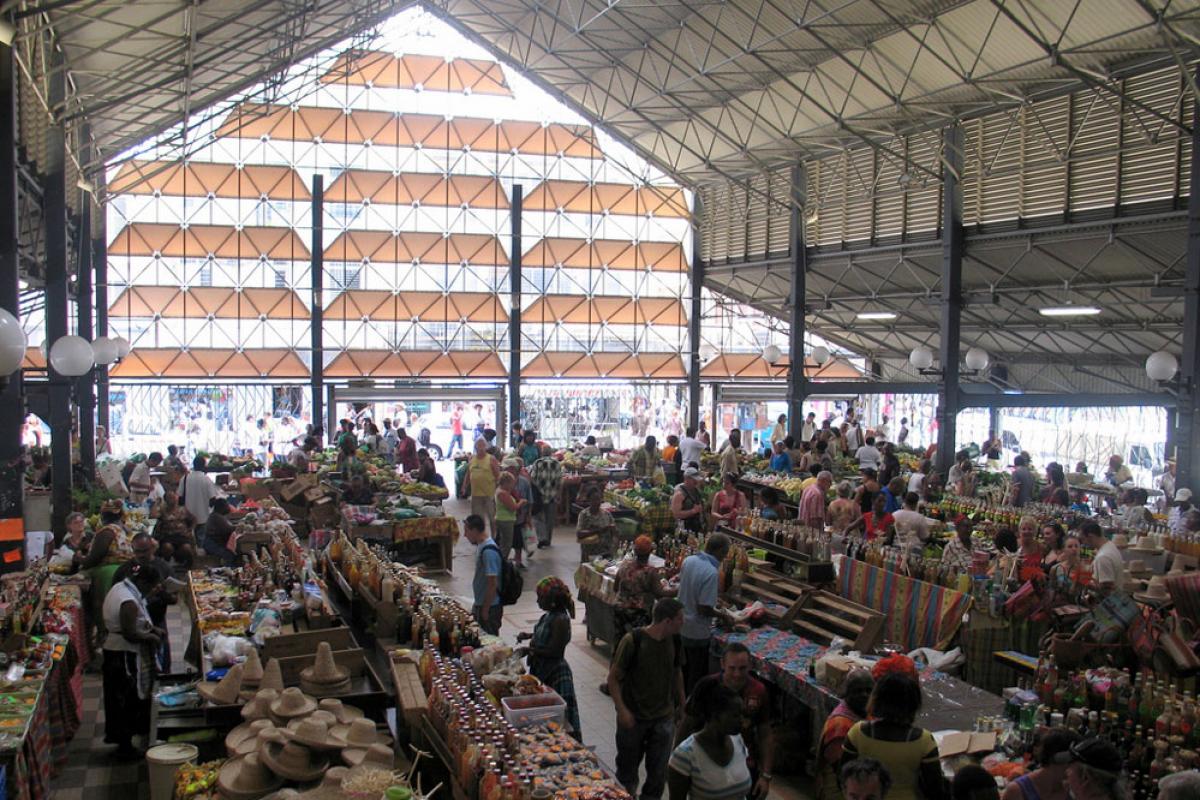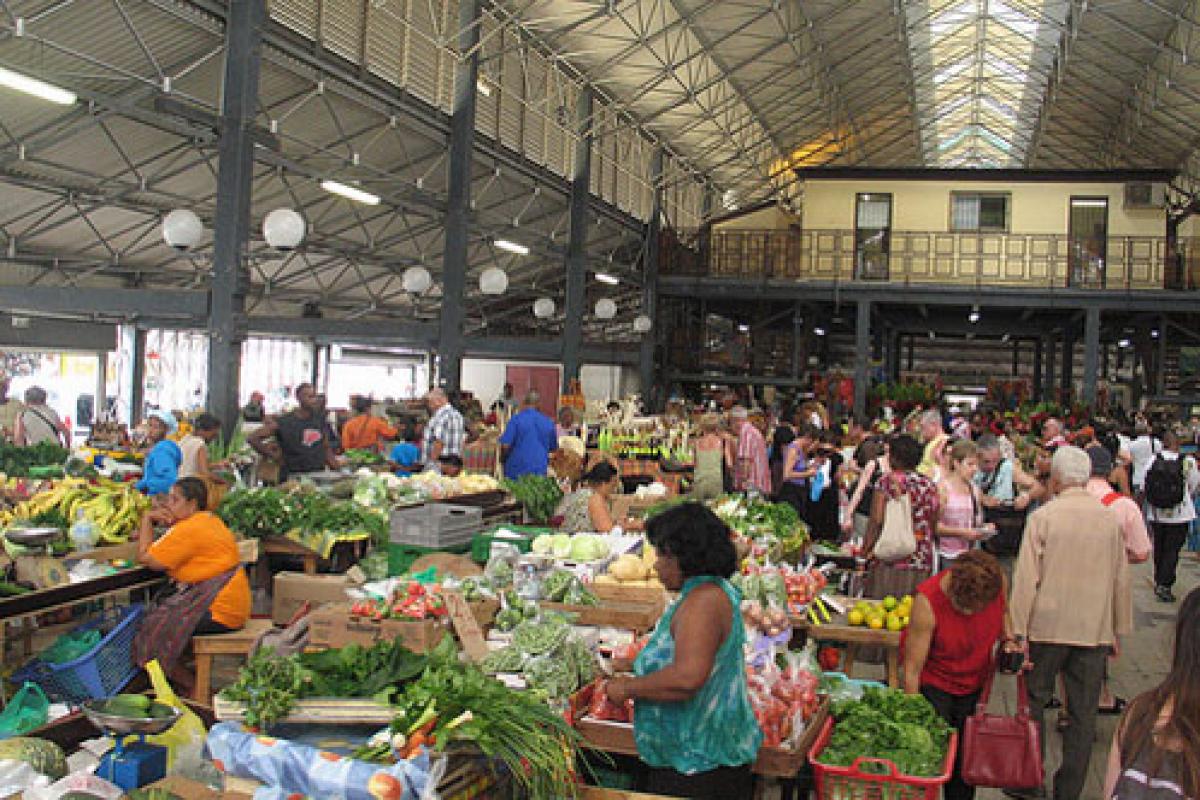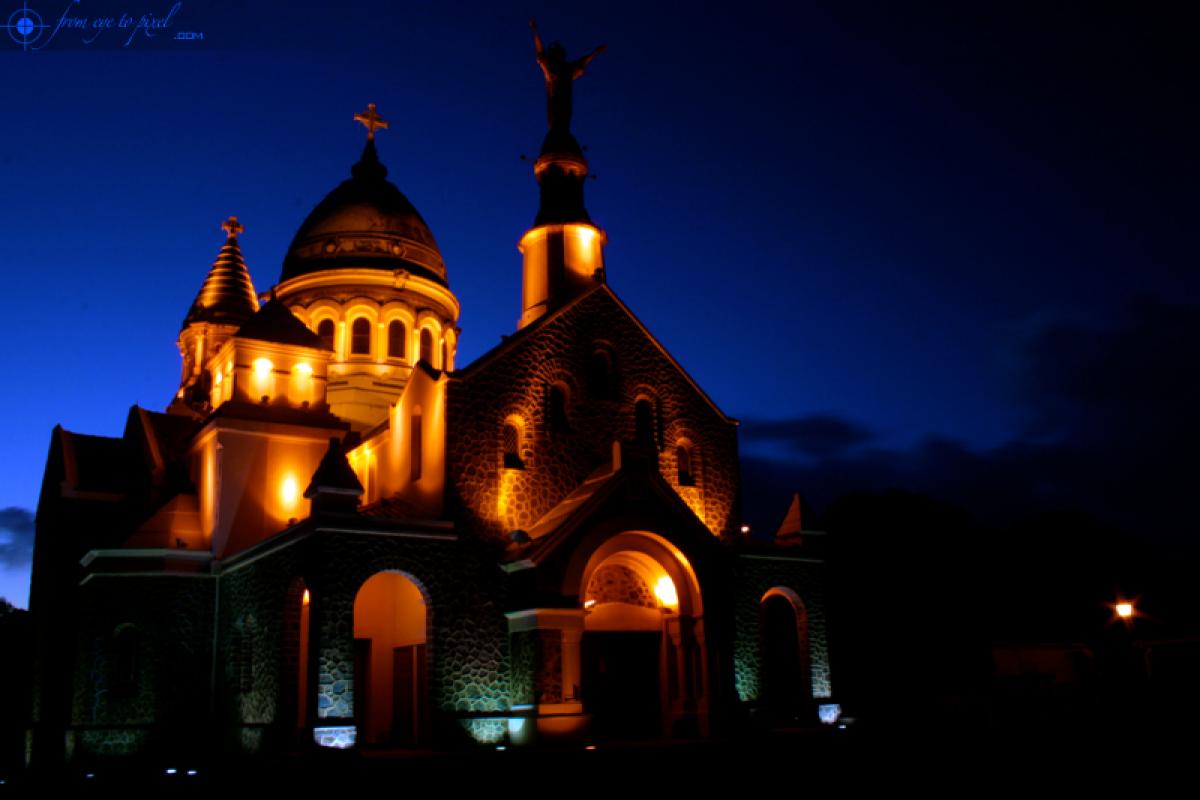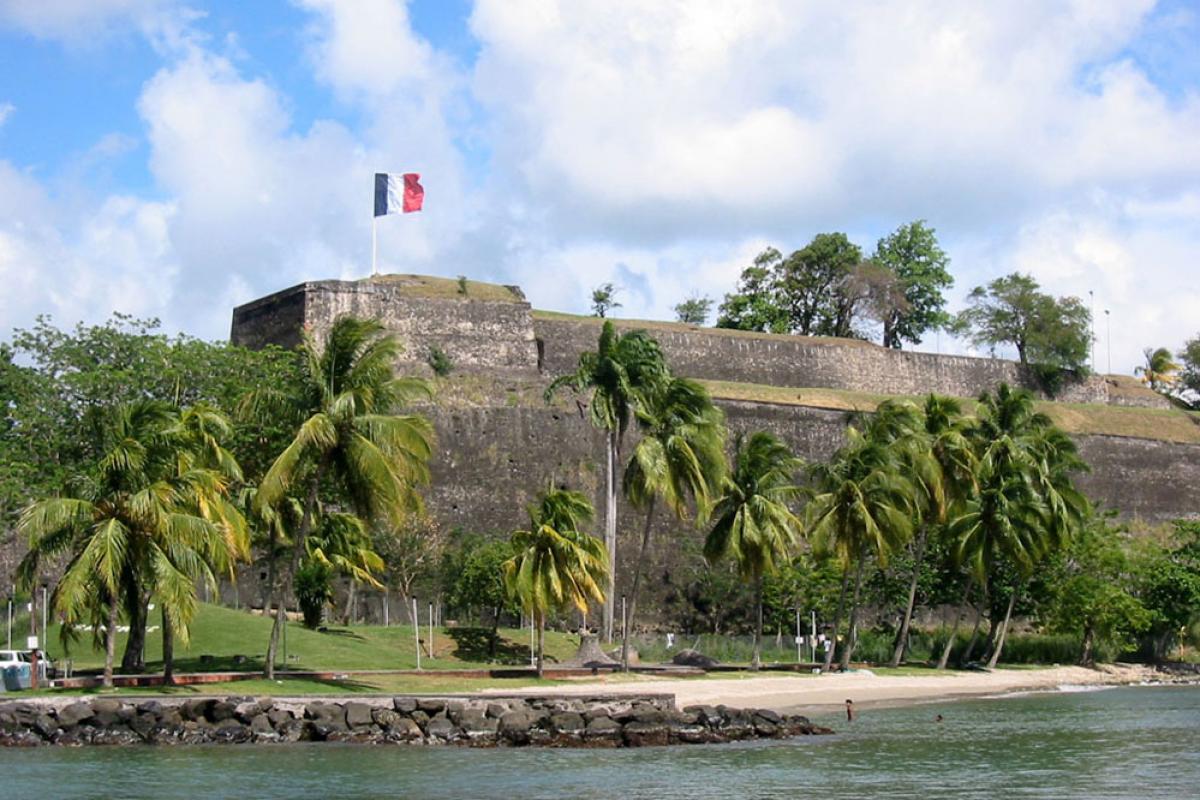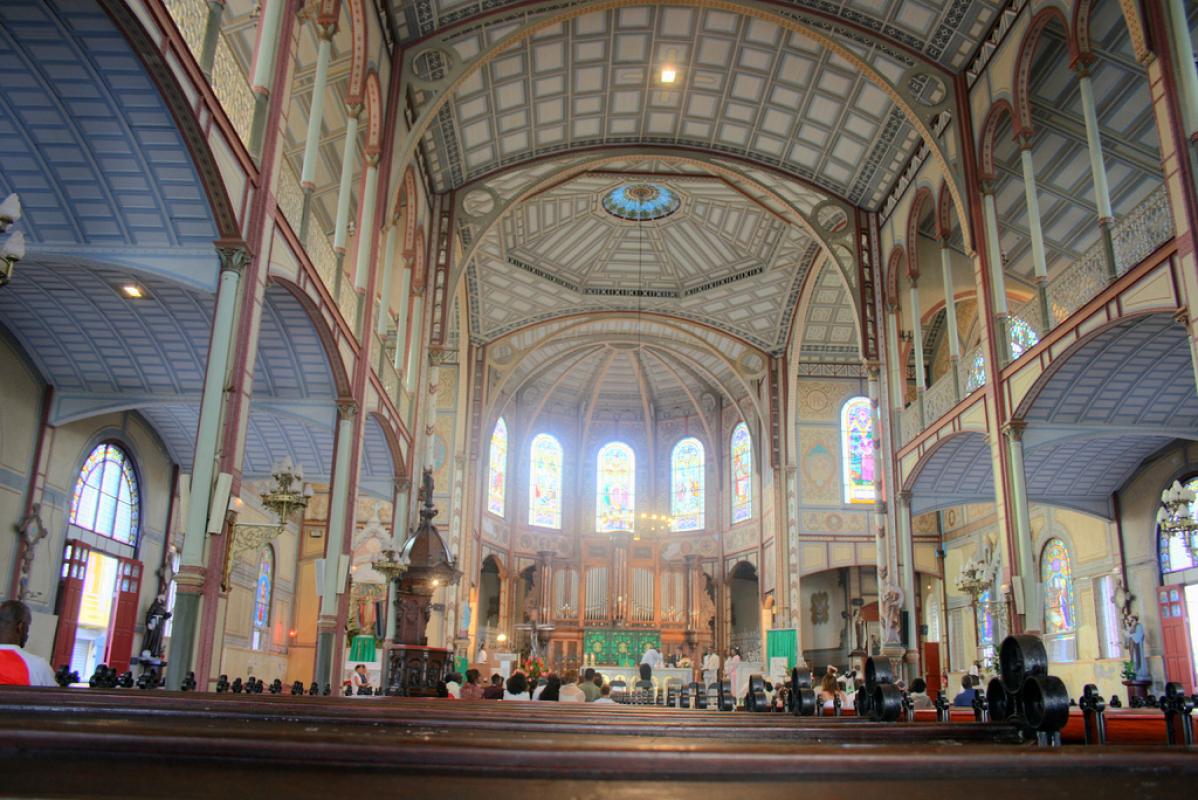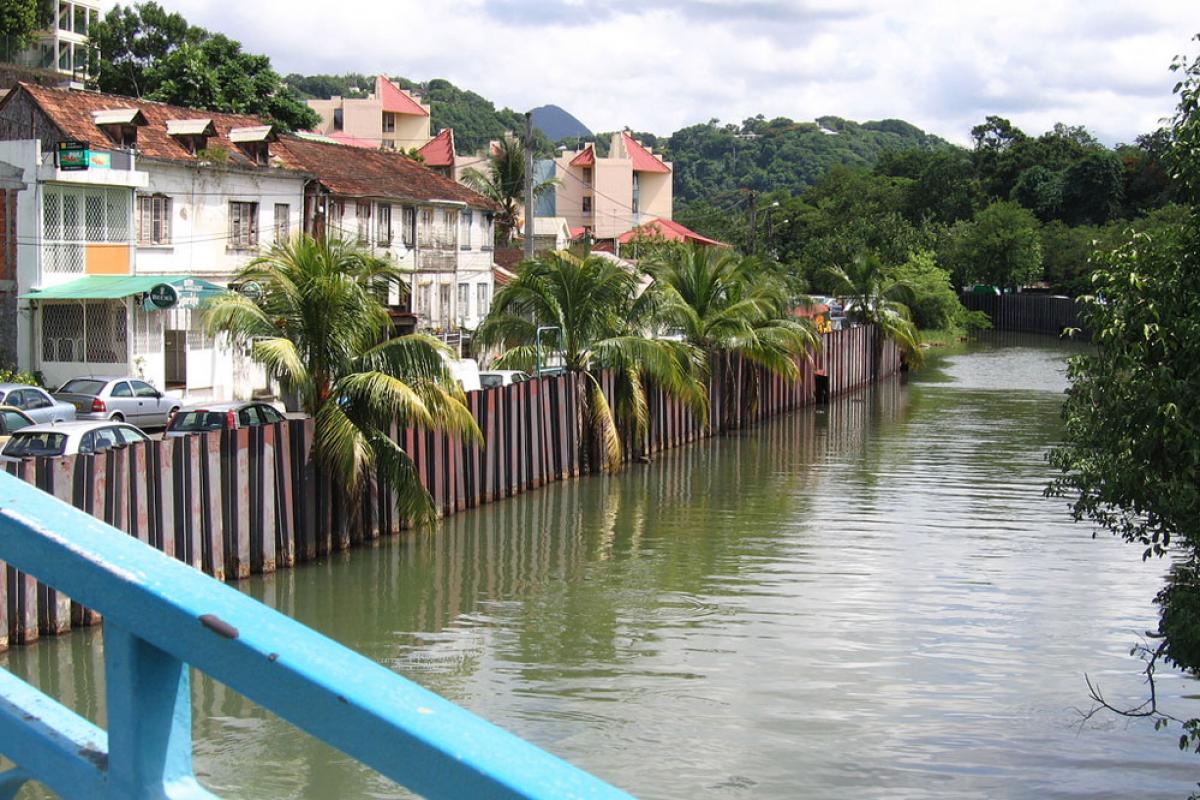Fort de France
Fort de FranceFort de France - Capital of Martinique
Administrative, economic and commercial Martinique capitale, Fort de France also has many tourist attractions among which the Schoelcher Library, Pre-Columbian Archeology Museum, Fort Saint-Louis or the large local market.
The history :
Fort de France was born in the early days of colonization on marshland. Given its strategic location, it was from 1639 that the governors built a fort there, then a city. In 1681, Saint Pierre lost its title of capital of Martinique in favor of Fort Royal, the new city. In spite of numerous catastrophes (flood, cyclone, fire, earthquake, epidemic ... not counting the battles with the English!) the city has known during the eighteenth century large urbanistic projects and a period of prosperity.
After the volcanic eruption of the Montagne Pelée mountain, which destroyed Saint Pierre in 1902, Fort de France became the economic and cultural capital with population increase. Today, the Schoelcher-Lamentin-Fort de France conurbation comprises 40% of the total population of the island and hosts the main industrial area of Martinique.
What to do in Fort de France?
Fort de France is experiencing significant traffic and parking difficulties. The best to visit the city is to take the shuttle boat from Les Trois Ilets. It drops you in front of the city center. The alternative is to avoid rush hours (weekdays from 7am to 9.30 am mainly), to park the car in one of the city's car parks and then to visit by feet.
The city center of Fort de France is bordered by the sea front, the canal of the River Madame, the Fort Saint Louis, the Savane (a park) and the General de Gaulle avenue. Relatively compact, it concentrates the main poles of interest and can easily be visited walking.
Places to discover :
The Schoelcher Library, whose metal structure was made in the workshops of Gustave Eiffel, is the work of the architect Henri PICQ, also author of the Cathedral Saint Louis. Originally built for the Universal Exhibition in Paris in 1887, it was then disassembled, chartered to Fort de France, then rebuilt in 1893. Its atypical Roman-Byzantine style architecture is harmonized with its environment.
The Departmental Museum of Pre-Columbian Archeology, tells the Amerindian history of Martinique from 4000 BC. J.C. until the extinction of the last Caribbean Indians, about in 1660. It reveals on 2 levels the main vestiges of the different Indian civilizations that inhabited the island.
La Savane, a vast and richly wooded garden, hosts the main folkloric and cultural events of Fort de France. An important redevelopment was done. This place with the seafront (malécon) located just in front, is a convivial space for walks. Like everywhere, in certain districts of Fort-de-France, there can be insecure climate.
The city markets constitute one of the main attraction center. A must see ! Colors, smells, flavors and sounds will awaken your senses in the midst of Martinique ambiances. The Doudous (nickname that may be given to women... Meaning "darling"), dressed in traditional costumes, will introduce you to the many local flavors. The fish market has lost its former charm, but you should not miss the Grand Marché, preferably early in the morning.
Staying at Fort de France :
Fort de France offers relatively few house rentals. However, you can identify some very beautiful ones via our house rental in Martinique engin.
